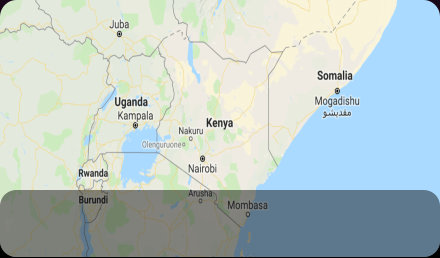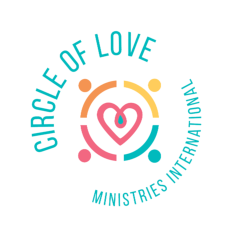
© circle of love ministries all rights reserved 2018

Kenya

Interesting Kenya
Kenya is a country in East Africa with coastline
on the Indian Ocean. It encompasses
savannah, lakelands, the dramatic Great Rift
Valley and mountain highlands. It's also home
to wildlife like lions, elephants and rhinos.
From Nairobi, the capital, safaris visit the
Maasai Mara Reserve, known for its annual
wildebeest migrations, and Amboseli National
Park, offering views of Tanzania's 5,895m Mt.
Kilimanjaro.
Cushitic-speaking people from northern Africa
moved into the area that is now Kenya
beginning around 2000 B.C. Arab traders
began frequenting the Kenyan coast around
the first century. Kenya's proximity to the
Arabian Peninsula invited colonization, and
Arab and Persian settlements developed along
the coast by the eighth century. During the
first millennium, Nilotic and Bantu peoples
moved into the region and Bantu now
comprise three-quarters of Kenya's
population.
The Swahili language, a mixture of Bantu and
Arabic, developed as a lingua franca for trade
between the different peoples. Arab
dominance on the coast was eclipsed by the
arrival in 1498 of the Portuguese, who gave
way in turn to Islamic control under the Imam
of Oman in the 1600s. The United Kingdom
established its influence in the 19th century.
The colonial history of Kenya dates from the
Berlin Conference of 1885, when the European
powers first partitioned East Africa into
spheres of influence. In 1895, the U.K.
government established the East African
Protectorate and soon after opened the fertile
highlands to white settlers. The settlers were
allowed a voice in government even before it
was officially made a U.K. colony in 1920, but
Africans were prohibited from direct political
participation until 1944.
From October 1952 to December 1959, Kenya
was under a state of emergency arising from
the "Mau Mau" rebellion against British
colonial rule. During this period, African
participation in the political process grew
rapidly.
Kenya became independent on Dec. 12, 1963,
and the next year joined the Commonwealth.
Jomo Kenyatta, a member of the large Kikuyu
ethnic group and head of the Kenya African
National Union (KANU), became Kenya's first
president. The minority party, Kenya African
Democratic Union (KADU), representing a
coalition of small ethnic groups that had
feared dominance by larger ones, dissolved
itself voluntarily in 1964 and joined KANU.
After the death of Jomo Kenyatta in 1978,
President Daniel Arap Moi took the reins of
power and for the next 24 years presided over
a regime that was generally characterized by
corruption, massive poverty and repression of
democratic rights.
In October 2002, a coalition of opposition
parties joined forces with a faction that broke
away from KANU to form the National
Rainbow Coalition (NARC). In December 2002,
the NARC candidate, Mwai Kibaki, was elected
the country's third president.
Kibaki's NARC coalition splintered in 2005 over
a constitutional review process. Government
defectors joined with KANU to form an
opposition coalition, the Orange Democratic
Movement (ODM), which defeated the
government's draft constitution in a popular
referendum in November 2005. Kibaki's
reelection in December 2007 brought charges
of vote rigging and unleashed two months of
violence in which as many as 1,500 people
died.
In August 2010, Kenyans overwhelmingly
adopted a new constitution, which introduced
additional checks and balances to executive
power and significant devolution of power and
resources to 47 newly created counties. It also
eliminated the position of prime minister
following the first presidential election under
the new constitution, which occurred in March
2013.

















































































































































